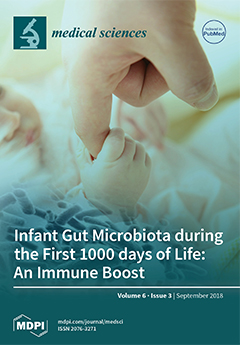Prediabetes is the precursor stage of diabetes mellitus and is also considered to be a risk factor for the development of cardiovascular disease. Atherogenic indices have been used for assessment of risk for cardiovascular disease development. To date, there is no data on
[...] Read more.
Prediabetes is the precursor stage of diabetes mellitus and is also considered to be a risk factor for the development of cardiovascular disease. Atherogenic indices have been used for assessment of risk for cardiovascular disease development. To date, there is no data on evaluating the relationship between atherogenic indices (cardiac risk ratio (CRR), atherogenic coefficient (AC), and atherogenic index of plasma (AIP)) and carotid intima-media thickness (CIMT) in prediabetes. Hence, we aimed to determine atherogenic indices (CRR, AC, and AIP) and CIMT in prediabetic subjects and then sought to evaluate the relationship between them. A total of 400 human subjects were included in the present study, out of which 200 were prediabetic subjects and 200 were normal healthy control subjects. For each subject, CRR, AC, and AIP were calculated from routine lipid parameters and carotid intima-media thickness was measured as well. Atherogenic indices, that is, CRR, AC, and AIP, were significantly increased in prediabetic subjects as compared to the controls (5.87 ± 0.87 vs. 4.23 ± 0.50,
p < 0.001; 4.87 ± 0.87 vs. 3.23 ± 0.50,
p < 0.001; and 0.29 ± 0.07 vs. 0.09 ± 0.09,
p < 0.001, respectively). Moreover, a significant and positive correlation was observed between CIMT and AIP (
r = 0.529,
p < 0.01), CRR (
r = 0.495,
p < 0.01), and AC (
r = 0.495,
p < 0.01). Prediabetic subjects present abnormalities in atherogenic indices and CIMT, which indicate a greater propensity of prediabetes for the development of cardiovascular disease. Hence, atherogenic indices can be used in addition to routine lipid parameters for the better assessment of subclinical atherosclerosis in prediabetic subjects.
Full article






